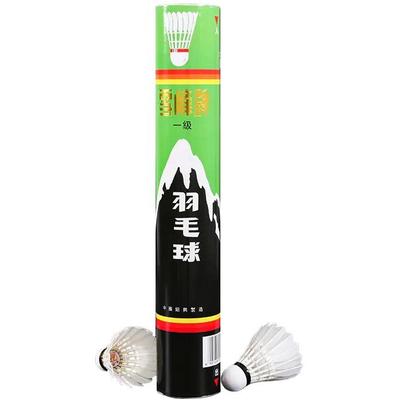1. Types of Shuttlecocks:
There are two main types of shuttlecocks:
-
Feathered Shuttlecocks: Made from natural feathers, usually from ducks or geese. Preferred for professional tournaments and high-level play due to their superior flight characteristics.
-
Nylon (Synthetic) Shuttlecocks: Made from nylon or other synthetic materials. They are more durable than feathered shuttles and are commonly used for recreational play and in some training situations.
2. Feathered Shuttlecocks:
a. Material:
The best feathered shuttles are made from the feathers of mature geese because of their durability and consistency.
b. Speed:
Different regions or altitudes demand different shuttle speeds. Manufacturers usually label shuttles with speeds such as 75, 76, 77, 78, and 79. The number signifies the shuttle's speed, with higher numbers indicating faster shuttles.
c. Durability:
Feathered shuttlecocks can wear out quickly. If you're practicing regularly, consider shuttlecocks that are known for their durability. However, remember that more durable shuttles might not offer the same playability as their less-durable counterparts.
3. Nylon Shuttlecocks:
a. Flight Pattern:
Nylon shuttles tend to have a different flight pattern than feathered ones. While choosing nylon shuttlecocks, go for reputable brands to ensure better flight consistency.
b. Durability:
One of the reasons players opt for nylon shuttles is their durability. These are excellent for beginners or recreational players.
4. Price vs. Quality:
- Expensive Doesn't Always Mean Better: Some expensive shuttlecocks might not be suited for your style of play or level of proficiency.
- Brand Matters: Known brands like Yonex, Li-Ning, Victor, and Carlton have a reputation for producing quality shuttlecocks.
5. Usage:
- Training vs. Tournament: Training shuttlecocks are generally built for durability, while tournament shuttlecocks prioritize precision and flight quality.
- Recreational Play: If you're playing for fun, nylon shuttlecocks might be more economical due to their longevity.
6. Storage:
No matter which shuttlecock you choose, it's essential to store them correctly. Keep them in a cool, dry place and away from direct sunlight. Proper storage can prolong the life of the shuttlecock.
7. Test Before Committing:
Before buying in bulk, purchase a tube of shuttlecocks to test. Play a few games to assess flight stability, speed, and durability. This trial will help you make a more informed decision.

